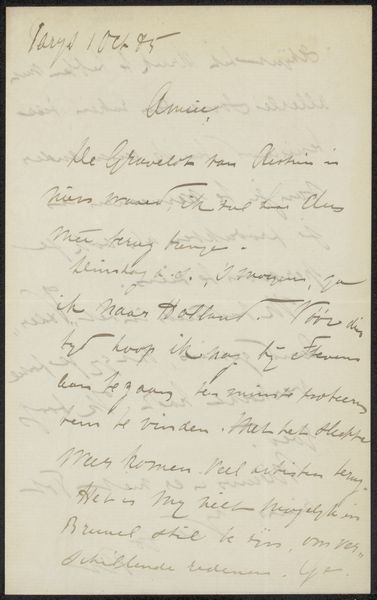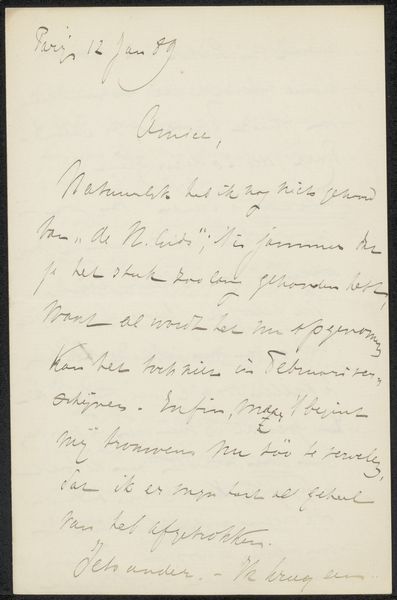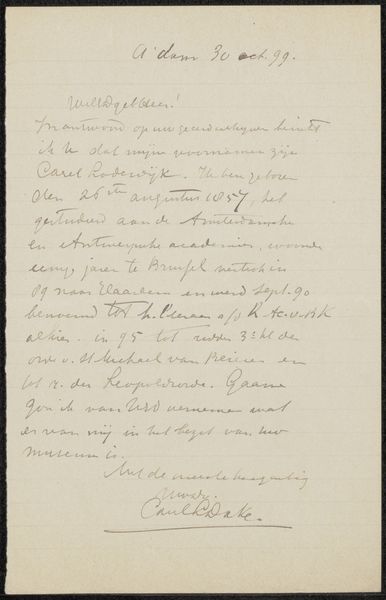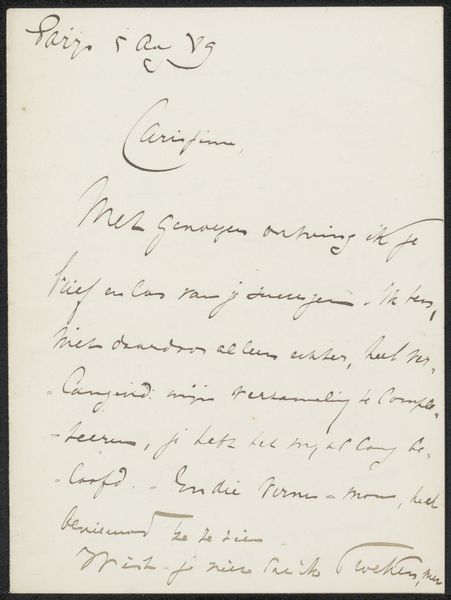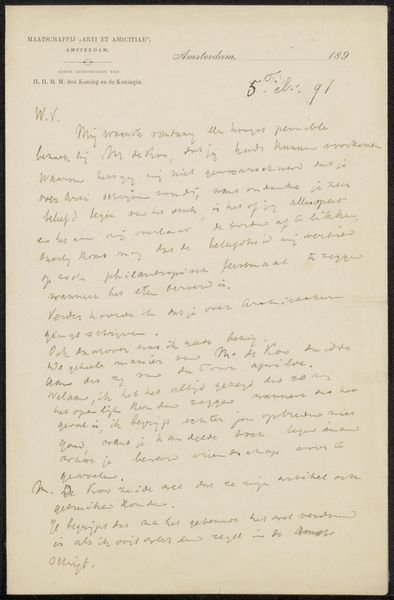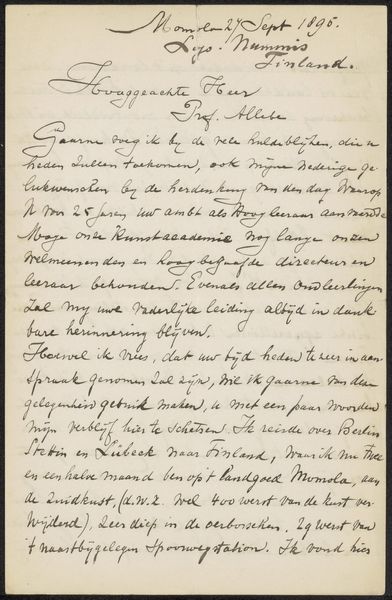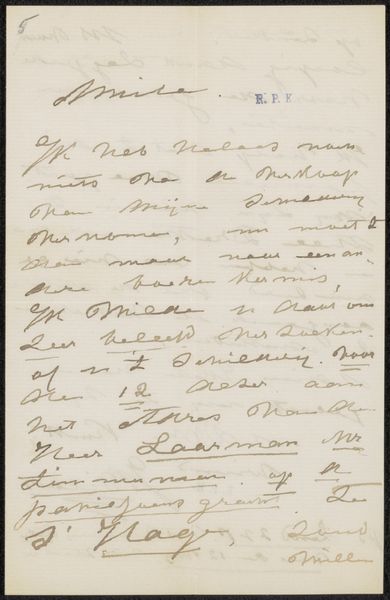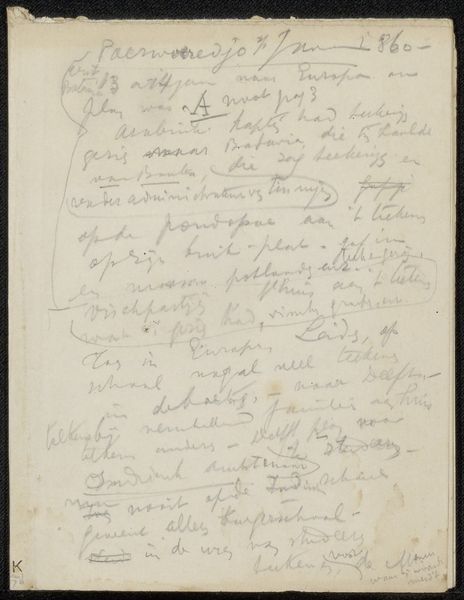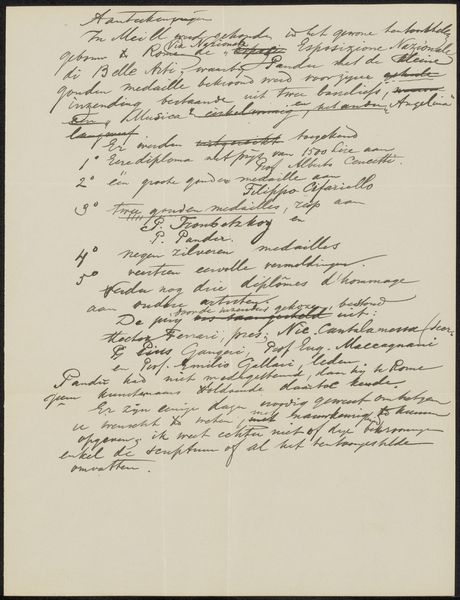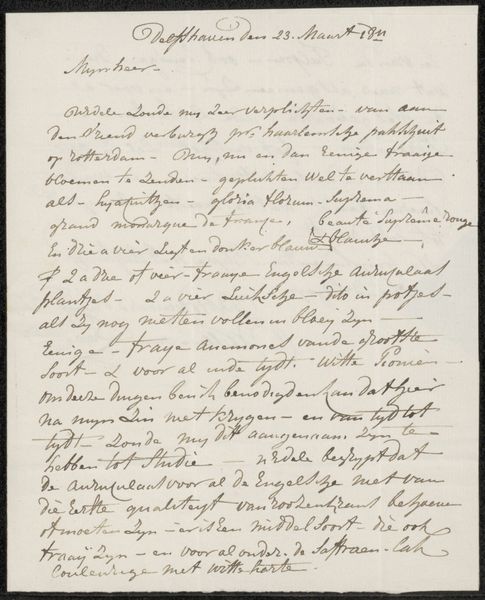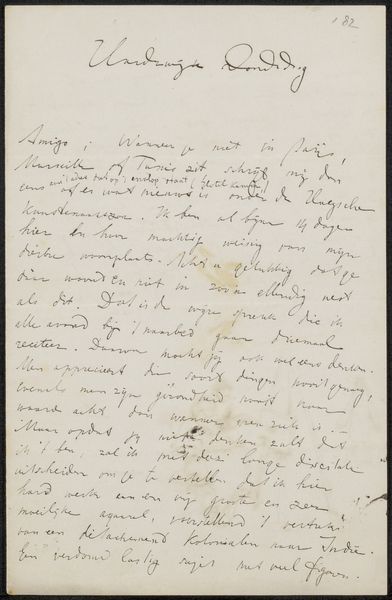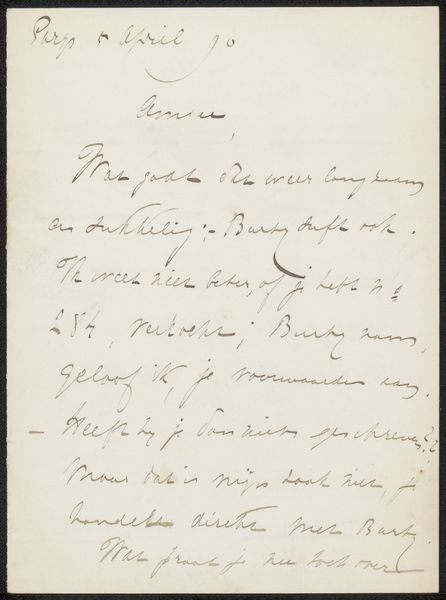
drawing, paper, ink, pen
#
drawing
#
hand-lettering
#
hand drawn type
#
hand lettering
#
paper
#
personal sketchbook
#
ink
#
hand-drawn typeface
#
ink drawing experimentation
#
intimism
#
pen-ink sketch
#
pen work
#
sketchbook drawing
#
pen
#
sketchbook art
Copyright: Rijks Museum: Open Domain
Curator: Looking at this, the first thing that strikes me is the density, almost a visual anxiety produced by the overwhelming texture of ink on paper. Editor: Here we have a drawing entitled "Brief aan Philip Zilcken," possibly from 1887 by Adriaan Pit. The piece consists of pen and ink on paper, currently held at the Rijksmuseum. Curator: The letterform itself is interesting, isn't it? The almost frantic, yet controlled movement of the pen. The quick strokes and densely packed line spacing seem very informal. There’s a sense of intimacy conveyed through the artist's hand. Editor: Indeed. It’s important to remember Zilcken's role in the art world at the time. He was an influential critic and artist. This personal exchange offers a rare glimpse into the art networks and relationships that shaped artistic tastes and opportunities in the late 19th century. We have an interesting contrast here between intimacy and an institutional frame, wouldn’t you say? Curator: Absolutely, particularly with its hand-drawn quality. Notice how Pit uses the letter as a canvas, manipulating the negative space around the words, which is interesting from the perspective of materiality. Look closely and one sees variations in the ink’s saturation and pressure which reveals much of the embodied movement from which it has emerged. Editor: Analyzing its social and institutional backdrop offers us deeper insights. "Intimism" seems fitting here as it reveals the artist's personal space where ideas and aspirations take root and find a concrete form. This piece invites viewers into the inner circle, beyond the finished product. Curator: Perhaps we are witnessing here something quite akin to what Barthes calls the “grain of the voice” -- “the materiality of the body speaking its mother tongue”. Editor: Well said! Seeing it this way makes us question the role of personal correspondence as an entry point into understanding art history’s bigger picture. Curator: Right! As always, it is fascinating how formal analysis connects directly with questions that are larger and cultural in scope. Editor: Precisely. Hopefully, this small peek gives listeners a different appreciation for the intimacy of a handwritten note from the fin de siècle and how much the socio-political elements also enrich a closer observation.
Comments
No comments
Be the first to comment and join the conversation on the ultimate creative platform.
